Efficacy of Deferoxamine Mesylate in Serum and Serum-Free Media: Adult Ventral Root Schwann Cell Survival Following Hydrogen Peroxide-Induced Cell Death
- PMID: 40136710
- PMCID: PMC11940984
- DOI: 10.3390/cells14060461
Efficacy of Deferoxamine Mesylate in Serum and Serum-Free Media: Adult Ventral Root Schwann Cell Survival Following Hydrogen Peroxide-Induced Cell Death
Abstract
Schwann cell (SC) transplantation shows promise in treating spinal cord injury as a pro-regenerative agent to allow host endogenous neurons to bridge over the lesion. However, SC transplants face significant oxidative stress facilitated by ROS in the lesion, leading to poor survival. deferoxamine mesylate (DFO) is a neuroprotective agent shown to reduce H2O2-induced cell death in serum-containing conditions. Here we show that DFO is not necessary to induce neuroprotection under serum-free conditions by cell survival quantification and phenotypic analysis via immunohistochemistry, Hif1α and collagen IV quantification via whole cell corrected total cell fluorescence, and cell death transcript changes via RT-qPCR. Our results indicate survival of SC regardless of DFO pretreatment in serum-free conditions and an increased survival facilitated by DFO in serum-containing conditions. Furthermore, our results showed strong nuclear expression of Hif1α in serum-free conditions regardless of DFO pre-treatment and a nuclear expression of Hif1α in DFO-treated SCs in serum conditions. Transcriptomic analysis reveals upregulation of autophagy transcripts in SCs grown in serum-free media relative to SCs in serum conditions, with and without DFO and H2O2. Thus, indicating a pro-repair and regenerative state of the SCs in serum-free conditions. Overall, results indicate the protectiveness of CDM in enhancing SC survival against ROS-induced cell death in vitro.
Keywords: Schwann cells; deferoxamine mesylate; oxidative stress; spinal cord injury; transplantation.
Conflict of interest statement
The authors declare no conflicts of interest.
Figures

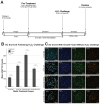


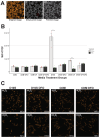
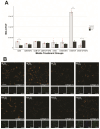
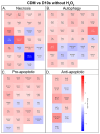
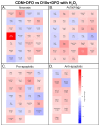
Similar articles
-
17β-estradiol protects Schwann cells against H2O2-induced cytotoxicity and increases transplanted Schwann cell survival in a cervical hemicontusion spinal cord injury model.J Neurochem. 2010 Nov;115(4):864-72. doi: 10.1111/j.1471-4159.2010.06770.x. J Neurochem. 2010. PMID: 20456002
-
Treatment with hypoxia-mimetics protects cultured rat Schwann cells against oxidative stress-induced cell death.Glia. 2021 Sep;69(9):2215-2234. doi: 10.1002/glia.24019. Epub 2021 May 21. Glia. 2021. PMID: 34019306 Free PMC article.
-
Iron depletion with deferoxamine protects bone marrow-derived mesenchymal stem cells against oxidative stress-induced apoptosis.Cell Stress Chaperones. 2020 Nov;25(6):1059-1069. doi: 10.1007/s12192-020-01142-9. Epub 2020 Jul 29. Cell Stress Chaperones. 2020. PMID: 32729002 Free PMC article.
-
Challenges in advancing Schwann cell transplantation for spinal cord injury repair.Cytotherapy. 2025 Jan;27(1):36-50. doi: 10.1016/j.jcyt.2024.08.005. Epub 2024 Aug 23. Cytotherapy. 2025. PMID: 39387736 Review.
-
Advances in Hypoxia-Inducible Factor-1α Stabilizer Deferoxamine in Tissue Engineering.Tissue Eng Part B Rev. 2023 Aug;29(4):347-357. doi: 10.1089/ten.TEB.2022.0168. Epub 2023 Feb 1. Tissue Eng Part B Rev. 2023. PMID: 36475887 Review.
Cited by
-
Combined Transplantation of Mesenchymal Progenitor and Neural Stem Cells to Repair Cervical Spinal Cord Injury.Cells. 2025 Apr 23;14(9):630. doi: 10.3390/cells14090630. Cells. 2025. PMID: 40358154 Free PMC article.
References
-
- Bennett J., Das J.M., Emmady P.D. StatPearls [Internet] StatPearls Publishing; Treasure Island, FL, USA: 2024. [(accessed on 23 August 2024)]. Spinal Cord Injuries. Available online: https://www.ncbi.nlm.nih.gov/books/NBK560721/
Publication types
MeSH terms
Substances
Grants and funding
LinkOut - more resources
Full Text Sources
Miscellaneous

